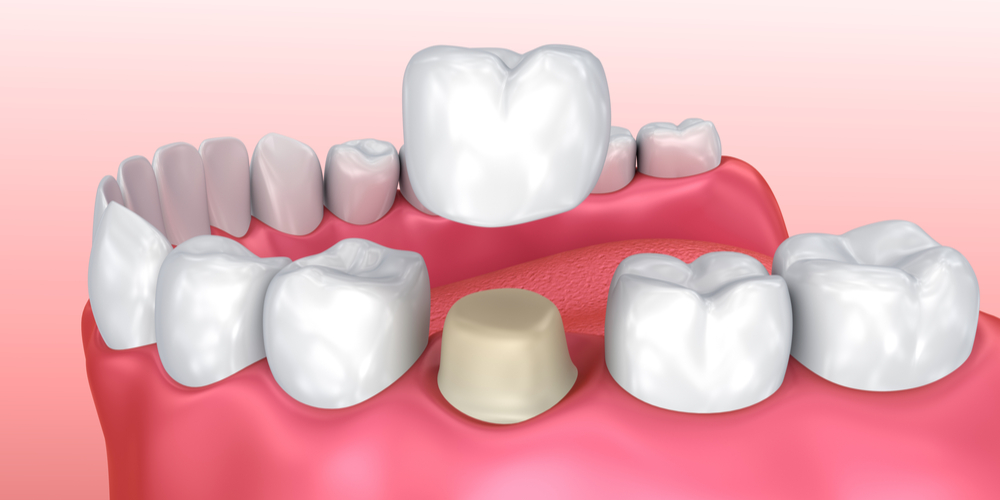
Crowns are used to treat cracked, chipped or worn teeth. Also known as ‘restorations’, they are placed over a damaged tooth (cap) and cover the outer surface. This enables it to retain its functionality and durability whilst providing additional strength.
Crowns are fabricated from a range of materials which includes porcelain, ceramic, gold or an alloy. Porcelain or ceramic crowns are the best option if you want a natural, white look.
REASONS FOR CROWNS
Crowns are fitted over teeth which have become worn down or damaged due to a variety of reasons, e.g. accident. Tooth decay is another factor as is bruxism (teeth grinding).
Other reasons:
- Aesthetic: to improve the appearance of a tooth
- Functional: strengthen the tooth after a dental procedure, e.g. root canal treatment or a large filling.
The advantage of a crown over other treatments such as composite bonding and veneers/lumineers is durability. A crown increases the strength of a tooth whereas there is no gain from having a veneer fitted or bonding applied to the tooth.
CROWNS PROCEDURE
A crown is fitted over two sessions.
In the first session the dentist prepares the tooth which is to receive the crown so that it is in optimum shape to do so. The tooth is cleaned, treated for decay and polished. It is then reshaped using a special drill (known as a ‘burr) which enables the crown to fit snugly over the top.
An impression is taken of your tooth via a mould containing dental putty which is then sent to a laboratory. This acts as a template for your new crown.
It takes 2 to 3 weeks to produce a crown: you will be fitted with a temporary crown during this time.
The second visit is where you are fitted with your new crown. The dentist roughens the surface of the designated tooth using an etching acid which provides an ideal surface for bonding. The crown is fitted over your tooth and adjusted until it is a correct fit.
It is then fixed in place with dental cement (bonding).
If looked after, a crown will last for up to 15 years.